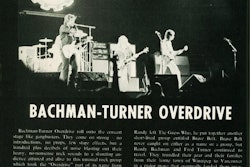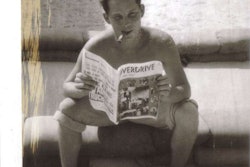King of the Open Wheel
Chip Ganassi’s open-wheel teams were 2010’s cream of the crop, but his Sprint Cup lagged
As we crank the ignition on the 2011 season, I’m still marveling over Chad Knaus and Jimmie Johnson winning their fifth straight NASCAR Sprint Cup championship, rallying in the last race of the 2010 season to nail it down.
Jamie McMurray celebrates winning the Daytona 500 in his first race with Earnhardt Ganassi Racing. Chip Ganassi became the first team owner to win the Daytona 500, Indianapolis 500 and Brickyard 400 in the same year.Good as the 48 team was, though, it finished second behind Chip Ganassi in my personal contest for Racer of the Year. Ganassi has proven himself the most dynamic multitasker in motorsports today.
Ganassi’s teams won the championships in both the Indy Racing League and Rolex Grand-Am sports car series and piled up a whopping 19 victories in Sprint Cup, IRL and Grand-Am combined. As impressive to me, though, is that all five teams and all six drivers (Jamie McMurray and Juan Pablo Montoya in Sprint Cup, Dario Franchitti and Scott Dixon in IRL and the Scott Pruett-Memo Rojas duo in Grand-Am) registered victories in 2010.
That, ladies and gentlemen, is what they call awesome — and unprecedented.
Let’s hit some of the highlights.
McMurray rallied past Kevin Harvick and Greg Biffle in the last two laps of the Daytona 500 to earn easily the biggest, and most surprising, victory of his career. Half a season later, he shocked the world again by working his way up through the pack at Indianapolis to win the Brickyard 400 and become only the third driver to win both those big events in the same season.
On Memorial Day weekend, Franchitti won the Indianapolis 500 in dominating fashion, leading 155 of the 200 laps. The win, Franchitti’s second in three years at Indianapolis, made Ganassi the first owner to win the Daytona 500 and Indy 500 in the same season. And when McMurray captured the Brickyard 400, Ganassi became the first owner to win the unofficial Daytona-Indianapolis-Brickyard “triple crown.”
The Grand-Am team uncharacteristically fumbled away a victory in the prestigious Rolex 24 at Daytona but rebounded to win nine of its remaining 11 races. The team’s title was Ganassi’s third in the last seven Grand-Am seasons.
The obvious question is whether Ganassi can top all that. Maybe, but it almost seems impossible.
That’s no knock on Ganassi. The 48 team’s five-peat in NASCAR notwithstanding, staying on top in any sport is tough. But you can expect Ganassi to give it a good run in 2011, at least in everything but Sprint Cup competition.
The Pruett-Rojas team is again the overwhelming Grand-Am favorite.
Franchitti, who won three of the IRL’s 17 races and had 13 top-five finishes en route to his third championship, and Dixon, who also won three times to finish third in the Indy points, are still on top of their games. Both crews also return virtually intact.
And the Franchitti and Dixon teams will be only half of Ganassi’s IRL equation in 2011. While most racing teams are still hunkered down and praying for the economy to improve, Ganassi is doubling down on the IRL, and doing so in a way that Formula 1 fans might recognize.
The Franchitti and Dixon teams will stay together, while Ganassi will run two new cars out of a separate facility he’s leasing from former drag racing great Don Prudhomme. The new cars will be driven by youngsters Graham Rahal, 21, and Charlie Kimball, 25, giving Ganassi a “first-string, second-string” set-up similar to the championship-caliber Red Bull and developmental Toro Rosso teams that Red Bull Racing runs in F1.
Rahal, of course, is the celebrated son of Bobby Rahal, while Kimball is the son of renowned racecar designer and engineer Gordon Kimball, who worked with Ferrari and McLaren in Formula 1 as well as Dan Gurney and John Barnard in American open-wheel racing. The younger Rahal made history by becoming the youngest driver ever to win an IRL race at age 19.
Yet while Ganassi is shaking up the IRL, he seems to be virtually ignoring the weakest of his outfits, the Sprint Cup operation. Despite McMurray’s big victories, neither he nor Montoya qualified for the Chase for the Championship, finishing 14th and 17th, respectively, in the final standings.
Maybe Ganassi’s partnership with Teresa Earnhardt in their Earnhardt-Ganassi Racing set-up is limiting his ability to improve the situation. Or maybe Ganassi’s heart is so devoted to open-wheel racing that Sprint Cup will never top his priority list.
Or maybe, when the racing gods look down upon their asphalt landscape, they see that Sprint Cup can get along just fine without a prominent Ganassi operation. But if Ganassi ever decides he wants to shift to a higher gear in NASCAR, those teams better be prepared. Given his open-wheel success, Ganassi’s likely to smoke the fendered racing circuit, too.
Kay Bell is an Austin, Texas-based writer. When she’s not yelling at her television during NASCAR races, she blogs about taxes and other financial topics at www.dontmesswithtaxes.typepad.com.
LOOSE LUGNUTS
Paving the way The much-anticipated repaving of the track at Daytona is complete, and the Daytona 500 ought to be interesting. Mark Martin and Bobby Labonte were among the Sprint Cup pilots who checked out the new surface in December, and all agreed that tire wear shouldn’t be a factor at all. They did say the track’s extreme smoothness will help keep everyone bunched up tight, like they often are at Talladega. Also, the new noses should limit the ability of two cars to hook up and “freight-train” their way through the pack like several pairs did so successfully last year at ‘Dega. And because most of the cars likely will spend so much time so close together, the chances for “the big one” will be even greater.
Catch me if you can One big change in Sprint Cup this year will be seen on pit road. As the cars switch to E-15 ethanol, they also will begin using the self-venting fuel cans that debuted in the Camping World Truck Series last year. The change will eliminate the catch-can man, meaning that the over-the-wall crews will contain six members instead of seven. It’ll also potentially add a second or two to most stops, though you know all the teams will diligently seek out ways to get that time back. And keeping all the fuel in the primary will help prevent moisture from humidity or rain from contaminating the ethanol.
Don’t have at it, boys There are a few new developments in Formula 1 this season, too. First, officials have clarified that the controversial practice of “team orders” is permitted, meaning teams can tell their drivers to switch positions to advance the team’s greater goals. Teams must, however, be honest over the radio and not use coded messages. More significant, I believe, is that drivers who drive dangerously or unsportingly will face tougher punishments, including parking a driver in midrace or suspending him afterward. Previously, officials generally could only impose drive-through or time-related penalties or drop drivers down the final standings. Specifically, F1 officials will look closely at drivers attempting to block, running off the track to try to gain an advantage and trying to crowd each other off the track. Stiffening these penalties is a clear sign that Formula 1 is no fan of NASCAR’s “have at it, boys” policy.










